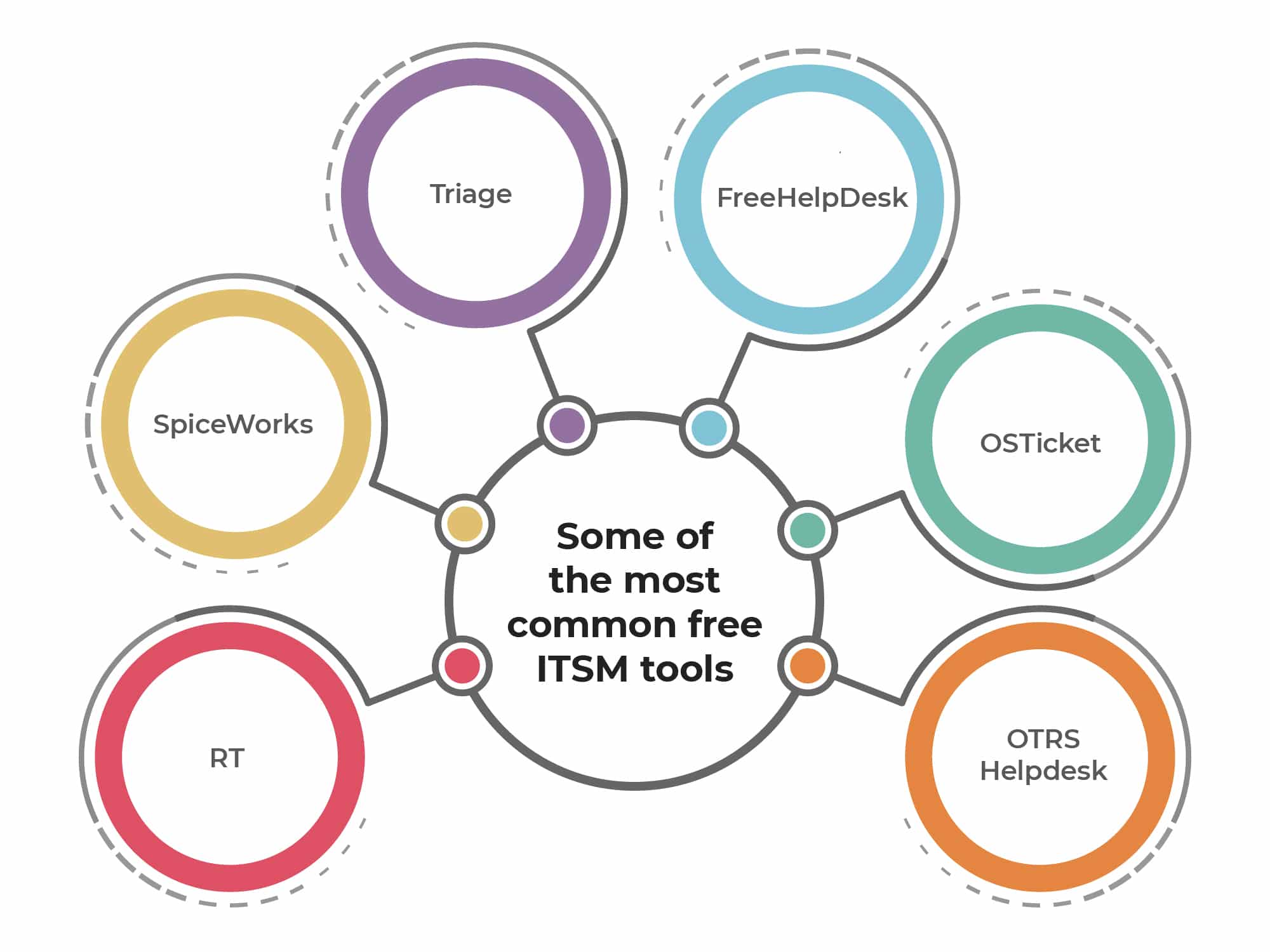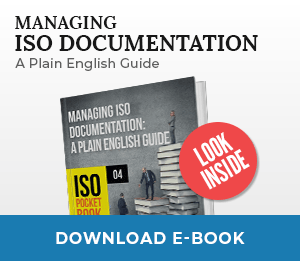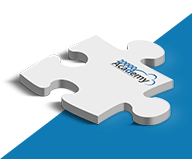Any application or computer program that enables you to run one or more IT Service Management processes is considered to be an ITSM tool. As with any application or program, there are a great number of both commercial and free tools for ITSM. In a small IT organization, parts of IT Service Management can be done by using office tools, such as spreadsheets, databases and word processing applications. However, managing larger amounts of data over time, with flexibility and consistency, requires specialized tools for the task at hand, regardless of organization size. Here is a list of the most common open source (free) ITSM tools:
- RT
- SpiceWorks
- Triage
- FreeHelpDesk
- OSTicket
- OTRS Helpdesk
Free ITSM software
Help Desk and Ticketing
- RT: Request tracker – RT is an “issue tracking system which thousands of organizations use for bug tracking, help desk ticketing, customer service, workflow processes, change management, network operations, and even more…”
- SpiceWorks – Spiceworks’ free app will allow you to easily manage your daily projects and user requests – all from one spot. And if you’re a help desk pro, you’ll still be amazed at how painless Spiceworks is to get up and running.
- Triage – The web-based application will provide interfaces for handling tickets with notes and solutions, full-text search indexing, and allowing for plug-ins which can generate tickets from external sources (i.e. Asterisk, OpenNMS, Nagios, IMAP, POP3, etc.).
- FreeHelpDesk – FreeHelpDesk is a feature-rich help desk system designed from the ground up to meet the demands of help desk staff and their users. It is a web-based system that can accept new calls from your users directly into the system. Calls can be tracked and searched to enable faster response times.
- OSTicket – Easily manage, organize, and streamline your customer service and drastically improve your customer’s experience – all with one simple, easy-to-use (and free) system.
- OTRS Help Desk – OTRS Help Desk software provides the tools needed to deliver superior service to your customers. Build stronger, longer-lasting relationships and gain a solid competitive edge with the proven functionality of OTRS.
If you need more information about Help Desk, Service Desk and Call Center distinction, follow this great blog post: Service Desk: Single point of contact.
Inventory and Change Management DataBase (CMDB)
- i-doIT – Open Source IT Documentation and CMDB.
- OCS Inventory NG – Open Computers and Software Inventory Next Generation is a technical management solution of IT assets. It uses small client software that has to be installed on every machine, and a server that aggregates information about those machines. It can be used for software deployment as well.
Learn more on ITIL V3 Change Management – at the heart of Service Management.
Service Monitoring
- Nagios – Achieve instant awareness of IT infrastructure problems, so downtime doesn’t adversely affect your business. Nagios offers complete monitoring and alerting for servers, switches, applications, and services.
- Icinga – is an enterprise-grade open source monitoring system which keeps watch over networks and any conceivable network resource, notifies the user of errors and recoveries and generates performance data for reporting. Scalable and extensible, Icinga can monitor large, complex environments across dispersed locations. Icinga is a branch of Nagios and is backward compatible.
- Zabbix – is the open source availability and performance monitoring solution. Zabbix offers advanced monitoring, alerting, and visualization features today which are missing in other monitoring systems – even some of the best commercial ones.
- GroundWork – monitors your entire datacenter and collects all its information in one place, helping to make better sense of your IT environment performance and availability data.
Service Management
- OTRS:ITSM – is a scalable, high-performance, enterprise-grade IT Service Management (ITSM) software that couples the best practices of the IT Infrastructure Library (ITIL v3). The OTRS IT Service Management software is a powerful set of tools for managing complex IT administration processes, reducing business risk and ensuring high service quality.
- iTop – written in a simple, popular programming language (PHP) that can be customized in an instant, iTop was developed to let you choose the modules you are interested in. If you just want a CMDB, you just get a CMDB. If you need to deal with all ITIL processes, you can get all ITIL modules covered by iTop. Adding a module is a question of minutes.
- Project Open (]Project Open[) – is a modular open source project and service management tool with a focus on finance and knowledge management. “]po[ ITSM” is a special configuration of ]po[ designed to address the specific needs of IT departments and IT service providers, according to ITIL V3 best practices.
Learn more on IT Service Management in general.
Note: Product descriptions have been given by their respective developers, and are to be used for informational purposes only. As they are all free to download and use, take your time to try them before implementing.

Free does not always equal zero cost
There are many free ITSM tools available for you to download, install, and use, but you don’t get any support or help implementing the tool itself or its processes. Open source ITSM tools generally have nice communities built around the tools, so there might be some help available if you get stuck, but don’t expect instant answers or solutions.
Companies that offer free ITSM tools generate their revenue by offering a) hosting and cloud services for the tool, b) consulting and help with implementation, c) support once the tool has been implemented, d) and sometimes additional features have to be purchased separately. It’s important to remember: these are all the things that will be up to you; find a resource to run the software (server), have the know-how to install & configure, use, teach others to use it, and support the software itself if needed.
Where to start
If there aren’t any kinds of ITSM tools implemented in your organization, then the best way to start would be tools for processes that revolve around IT Operations, and are most visible to end users. These include Incident and Service Management (Help Desk / Service Desk), Configuration Management, Change Management, and some sort of Service Monitoring tools.
Make a list of products that may interest you, and some criteria which will help you decide: installation requirements (OS, resources, web based, etc.), modules available (incident management, configuration management, change management, etc.), are modules aligned with best practices such as ITIL (Read more on: How to implement ITIL and information about other ITSM Standards and Frameworks), is there support available (community based or commercial), additional features such as self-service portal and/or e-mail integration, and how confident you feel about being able to implement it.

 Neven Zitek
Neven Zitek 



